Share this
how to make patient monitoring smarter, simpler, and more specific
by Neoteryx Microsampling on Jan 28, 2019 6:09:00 AM
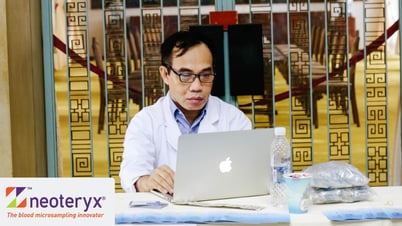 Technology is taking much of the guesswork out of medicine. Innovations in patient monitoring and data collection now allow doctors and other healthcare professionals to track patients' conditions over time, sometimes without even requiring in-person visits.
Technology is taking much of the guesswork out of medicine. Innovations in patient monitoring and data collection now allow doctors and other healthcare professionals to track patients' conditions over time, sometimes without even requiring in-person visits.
Anyone interested in the biggest questions around human health and wellbeing – how we live, how we care for each other, and how these systems can be improved – should be acutely aware of new progress in patient monitoring, particularly remote patient monitoring (RPM). Healthcare is becoming increasingly decentralized, enabling telehealth for more democratized access to care.
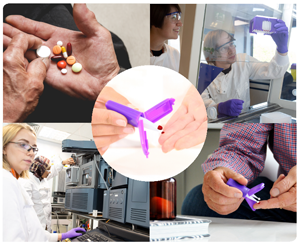 Remote sampling – the collection small, precise volumes of blood or other biological fluid using microsampling devices and a lancet for a quick finger-stick – is a crucial part of the expansion of healthcare to more remote, virtual and decentralized models.
Remote sampling – the collection small, precise volumes of blood or other biological fluid using microsampling devices and a lancet for a quick finger-stick – is a crucial part of the expansion of healthcare to more remote, virtual and decentralized models.
Thanks to advances in technology, it is now possible to get a tremendous amount of information from a very small biological specimen. Collecting specimens in the precise volumes needed for bioanalysis is now possible at a reasonable cost and with easy convenience.
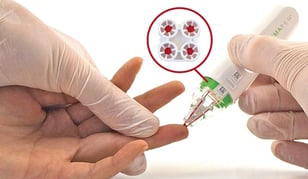 Finger-stick microsampling devices such as the hemaPEN® and the Mitra® device, based on VAMS® technology, provide the missing link between the push towards remote healthcare pathways and the technical innovations that make them possible.
Finger-stick microsampling devices such as the hemaPEN® and the Mitra® device, based on VAMS® technology, provide the missing link between the push towards remote healthcare pathways and the technical innovations that make them possible.
With microsampling, it is less important for patients to visit clinics to receive optimum care. In many cases, they can receive care in the comfort of their homes, offices or elsewhere.
This is made possible through telehealth communications (online portals, digital chat, video conference call, email) with care providers, which is paired with remote blood sample collection by anyone, anywhere.
Health providers can ship blood sample collection kits to their patients or study cohorts for sample collection on the go.
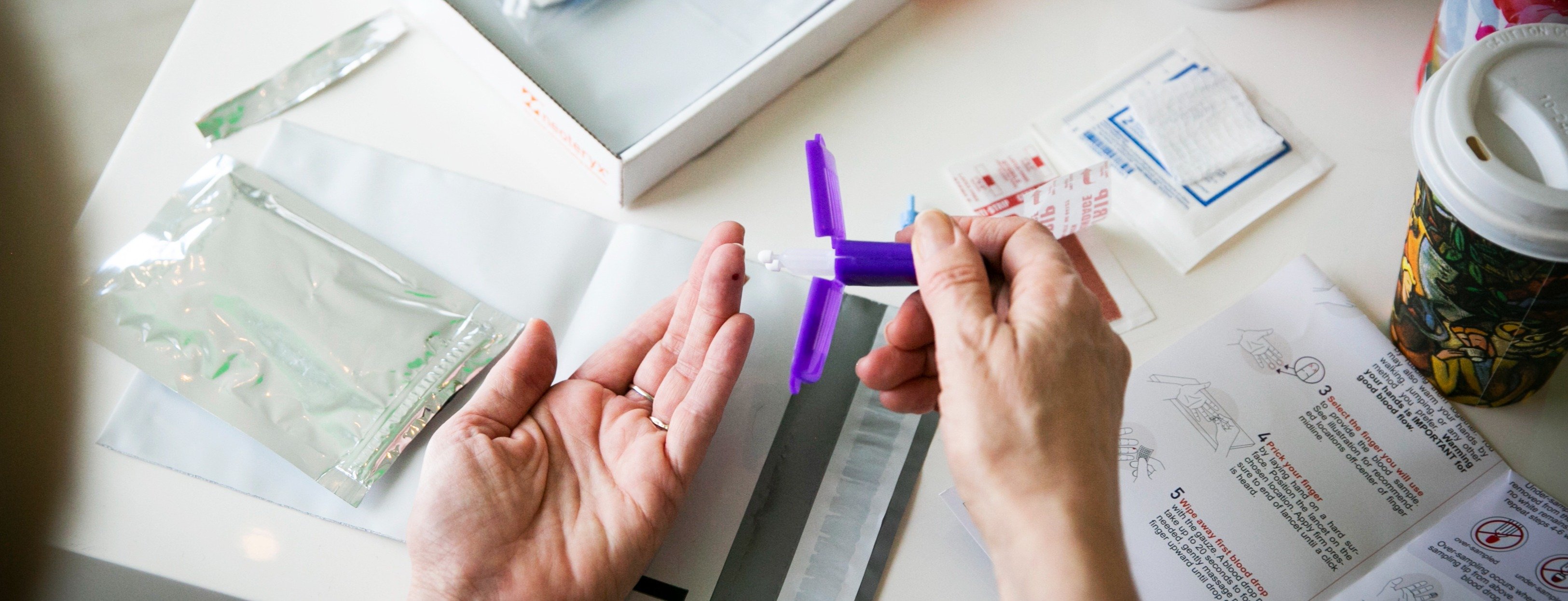 End-users can collect their own finger-stick blood samples using the supplies in the kit box. They can ship their samples to the lab using the provided envelope and dropping it in the nearest mailbox.
End-users can collect their own finger-stick blood samples using the supplies in the kit box. They can ship their samples to the lab using the provided envelope and dropping it in the nearest mailbox.
There are clinical labs and toxicology labs that can now process dried blood microsamples. After the lab receives and process the samples, the care provider can consult with patients through Zoom or another video conferencing program.
Thus, remote microsampling helps enable continuous medical monitoring without the inconvenience of frequent in-person appointments. It allows healthcare professionals to get more information at more appropriate times, for more useful insights, without unreasonable costs or additional burden on patients' bandwidth.
Much success in microsampling has already been achieved in the realms of therapeutic drug monitoring (TDM), toxicology, clinical trials, infectious disease studies, and other areas.
- It eliminates the hematocrit (HCT) bias that reduced the effectiveness and slowed the adoption of earlier small-volume dried blood collection methods, generating results comparable to those from the wet blood gold standard.
- It’s been validated for at-home HbA1c monitoring for pediatric patients with diabetes.
- And it works well for montoring immunosuppressants, antiepileptics, antipsychotics, and other vital and serious long-term drug regimens.
- It's also used in substance abuse recovery and other situations where needle blood draws aren't the most appropriate solution.
Microsampling improves patient comfort and convenience. What’s more, money is saved on transportation, clinic visits, and other costs associated with onsite doctor or clinical trials visits traditional methods. Switching to a microsampling workflow for patient monitoring can save considerable sums of money over time.
Remote microsampling is poised to enable further innovations in areas such as:
- Precision medicine – facilitating more precise, tailored regimens of care, using patient-centered models,
- Predictive care - anticipating, say, a cardiac event, before it occurs, allowing plenty of time for the right intervention,
- Health and wellness - allowing fitness fans and nutrition & wellness buffs to monitor their own biomarkers in real time,
- Aging in place - encouraging markedly better quality of life with fewer visits to the clinic or hospital, despite medical challenges.
If you’re invested in the growth and development of patient monitoring, now is the best time to explore microsampling. More information about remote microsampling for TDM can be found via our Microsampling for Drug Monitoring page.
Share this
- Microsampling (206)
- Research, Remote Research (119)
- Venipuncture Alternative (105)
- Clinical Trials, Clinical Research (83)
- Mitra® Device (73)
- Therapeutic Drug Monitoring, TDM (51)
- Dried Blood Spot, DBS (39)
- Biomonitoring, Health, Wellness (30)
- Infectious Disease, Vaccines, COVID-19 (24)
- Blood Microsampling, Serology (23)
- Omics, Multi-Omics (21)
- Decentralized Clinical Trial (DCT) (20)
- Specimen Collection (18)
- Toxicology, Doping, Drug/Alcohol Monitoring, PEth (17)
- Skin Microsampling, Microbiopsy (14)
- hemaPEN® Device (13)
- Preclinical Research, Animal Studies (12)
- Pharmaceuticals, Drug Development (9)
- Harpera Device (7)
- Industry News, Microsampling News (5)
- Antibodies, MAbs (3)
- Company Press Release, Product Press Release (3)
- Environmental Toxins, Exposures (1)
- July 2025 (1)
- May 2025 (1)
- April 2025 (2)
- December 2024 (2)
- November 2024 (1)
- October 2024 (3)
- September 2024 (1)
- June 2024 (1)
- May 2024 (1)
- April 2024 (4)
- March 2024 (1)
- February 2024 (2)
- January 2024 (4)
- December 2023 (3)
- November 2023 (3)
- October 2023 (3)
- September 2023 (3)
- July 2023 (3)
- June 2023 (2)
- April 2023 (2)
- March 2023 (2)
- February 2023 (2)
- January 2023 (3)
- December 2022 (2)
- November 2022 (3)
- October 2022 (4)
- September 2022 (3)
- August 2022 (5)
- July 2022 (2)
- June 2022 (2)
- May 2022 (4)
- April 2022 (3)
- March 2022 (3)
- February 2022 (4)
- January 2022 (5)
- December 2021 (3)
- November 2021 (5)
- October 2021 (3)
- September 2021 (3)
- August 2021 (4)
- July 2021 (4)
- June 2021 (4)
- May 2021 (4)
- April 2021 (3)
- March 2021 (5)
- February 2021 (4)
- January 2021 (4)
- December 2020 (3)
- November 2020 (5)
- October 2020 (4)
- September 2020 (3)
- August 2020 (3)
- July 2020 (6)
- June 2020 (4)
- May 2020 (4)
- April 2020 (3)
- March 2020 (6)
- February 2020 (3)
- January 2020 (4)
- December 2019 (5)
- November 2019 (4)
- October 2019 (2)
- September 2019 (4)
- August 2019 (4)
- July 2019 (3)
- June 2019 (7)
- May 2019 (6)
- April 2019 (5)
- March 2019 (6)
- February 2019 (5)
- January 2019 (8)
- December 2018 (3)
- November 2018 (4)
- October 2018 (7)
- September 2018 (6)
- August 2018 (5)
- July 2018 (8)
- June 2018 (6)
- May 2018 (5)
- April 2018 (6)
- March 2018 (4)
- February 2018 (6)
- January 2018 (4)
- December 2017 (2)
- November 2017 (3)
- October 2017 (2)
- September 2017 (4)
- August 2017 (2)
- July 2017 (4)
- June 2017 (5)
- May 2017 (6)
- April 2017 (6)
- March 2017 (5)
- February 2017 (4)
- January 2017 (1)
- July 2016 (3)
- May 2016 (1)
- April 2016 (2)

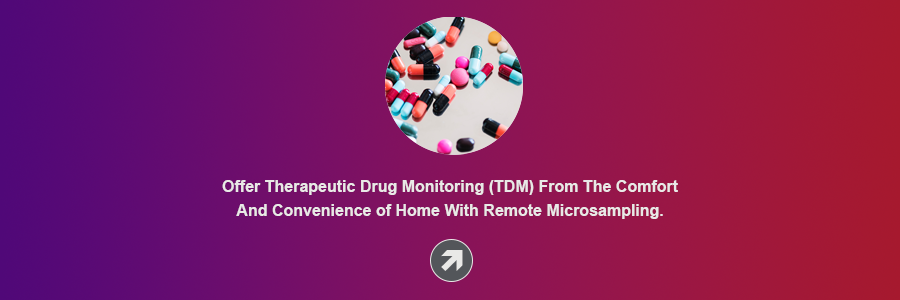

No Comments Yet
Let us know what you think